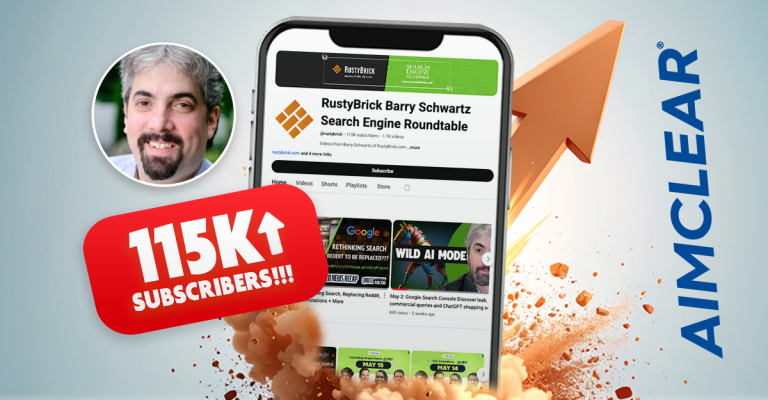 SEO copywriting requires the genius of savvy wordsmiths. Keyword research, a clear targeted strategy and creativity are essential elements to successful content. Sage copywriters: Byron White, Chief Idea Officer, ideaLaunch and Heather Lloyd-Martin, CEO of SuccessWorks shared their top wordsmith-tips to maximize search campaign performance during the Copywriting Boot Camp panel at SES Chicago 2009, moderated by Rebecca Lieb, VP, U.S. Operations, Econsultancy.
SEO copywriting requires the genius of savvy wordsmiths. Keyword research, a clear targeted strategy and creativity are essential elements to successful content. Sage copywriters: Byron White, Chief Idea Officer, ideaLaunch and Heather Lloyd-Martin, CEO of SuccessWorks shared their top wordsmith-tips to maximize search campaign performance during the Copywriting Boot Camp panel at SES Chicago 2009, moderated by Rebecca Lieb, VP, U.S. Operations, Econsultancy.
Lieb emphasized how important expertly-crafted content is to SEO:
Search engines only understand words, they don’t understand podcast, videos or graphs. It is all about words.
Byron is up first diving right in.
How to approach content and optimization: craft a content marketing plan. Master the art of learning the wants and needs and the science of delivering it to them in a meaningful way.
Your plan and what you end up writing will change with what you learn about competition, your target market and your industry. Those variables MUST be research.
Research with the latest (free!) online research tools:
- idealaunch.com
- spyfu.com
- compete.com
- quantcast.com
- seomajestic.com
- raven-seo-tools.com
Find the hot topics within social media conversations. Use TweetDeck to monitor conversations about your brand, competition and industry.
Discover Your Customers’ Wants and Needs Creatively.
Research ideas:
- web search box
- social media sphere
- talk and listen
- surveys/polls
- navigational patterns
- tradeshows
- feedback on site
Establish specific content marketing goals: ie listing position, conversion rate, sales, traffic, user acquisition.
Once you’ve developed your strategy the next objective is: choosing the right venues.
Create a tip and advice center on your website. Become a resource for searchers. They’ll love you for it.
On-demand printing is the new age of publishing.
- ISBN authority
- Authority validation
- Speaking gateway
Webinars and videos turn browsers into believers.
Mircrosites are great to test different ideas and concepts.
Utilize podcasts to:
- interview experts
- testimonials
- idea feedback
- focus groups
- employees
SEO is the science of content optimization starting with keyword research.
Look at trend report, find hot topics and create content. Develop content maps on the hot topics and keywords. Choose topics for readers first, not search engines. You’ll only make money if people go to your site and only your mom will go if your content sucks.
The Art of Content Creation
- Identify the concrete ideas to drive the business.
- Create Mantras, not missions.
- Distinguish customer needs vs. reader needs (Readers want to be introduced to new worlds) They want to be surprised and delighted.
- Add surprise to your content to engage readers (Which of these animals is more likely to kill you: Shark or Deer? *read on for the answer* 🙂 )
- Add emotion to content to make readers care
- Add emotion to your headlines (Readers make decisions in milliseconds based on the visual and headlines)
- Develop stories to make people take action
Join the Content Revolution
- Listen to customers wants and need
- Deliver content to them in a compelling way
- Test
- Catch readers traveling at high speeds
- Deliver with tools they use
Next, Lloyd-Martin outlined seven steps of excellent copywriting. But first asked: Why care about content?
The best SEO is good content -Seth Godin
Quality Content + Quality Links + Keyword Research = SEO Sweet-Spot
How the text is written has a huge impact on search positions and conversions. It’s not just about sticking keywords in copy. It’s not about keyword density. It’s about writing content that connects with readers.
Your Main Advantage: Control
People think SEO is uncontrollable. It’s not just up to Google or Bing, the content helps you control your positions and conversion rates.
Step 1: Who are you? Develop Customer Persona.
You should know your audience inside and out. Find out what makes your target audience tick. Discover their pain and pleasure points.
Write for the right audience. Consider:
- Who is your target audience (it’s not everyone)
- Do you have multiple target audiences?
- How old is your typical buyer/reader?
- What level of education have they reached?
- What are their average income levels?
- What benefits are important to them?
- What are their hopes, dreams, fears and desires?
Step 2: WIIFM (What’s In It For Me?)
Develop your benefit statements:
- What are the benefits of working with you? Why are they important?
- What specific objectives do you have to overcome?
- What is your competition doing and how do you position your company within your local or national marketplace?
- What tone and feel should you use to resonate with your audience?
How you say what you say is extremely important.
Step 3: Be a Content Psychic.
Keyword research helps you understand what information people are searching for and what questions they have. The more relevance, the longer they stay. The longer they stay, the more they trust you. The more they trust you, the more likely they’ll buy. Cha-ching.
Build out resource pages. Prospects often have question. Don’t just be a company, be a resource. It also helps in the SERPs and makes you look more credible.
Step 4: Free Yourself From “Fake Rules.”
Party like it’s 1999, but don’t optimize your site that way. It’s not about keyword density anymore.
General SEO content “rules”
- Keywords in headlines and subheadlines
- Keywords in hyperlinks
- Keywords throughout content
- Keyword-rich title
Step 5: Make Your Titles Sizzle Off the SERPs!
Think of titles as headlines.The SERPs is your first opportunity for conversion.
Step 6: Control What You Can Control. (take SEO copywriting baby steps)
Beware of the website mullet! Check for outdated copy
Worst Outdated Offenders:
- Press pages
- Conference/events pages
- Product pages
- Old articles
Set up an editorial plan to “clean up” old content. Schedule it.
Leverage content opportunities: start a blog or rewrite old, un-optimized pages.
Step 7: Follow the SEO Copywriting Checklist:
- Who does the writing
- What pages need to be rewritten
- Where does the budget/times come from (good writing takes time)
- Why don’t you look at other opportunities (twitter/blogs)
- How will you know if it works (conversion testing)
Readers first. Bots second. If you can’t do either, don’t bother. -White
And now for the answer:
* So, what’s gonna kill you? A Deer, by 300 times. (Seriously, if you hit them with your car, you don’t always win… Please, be safe out there.)












